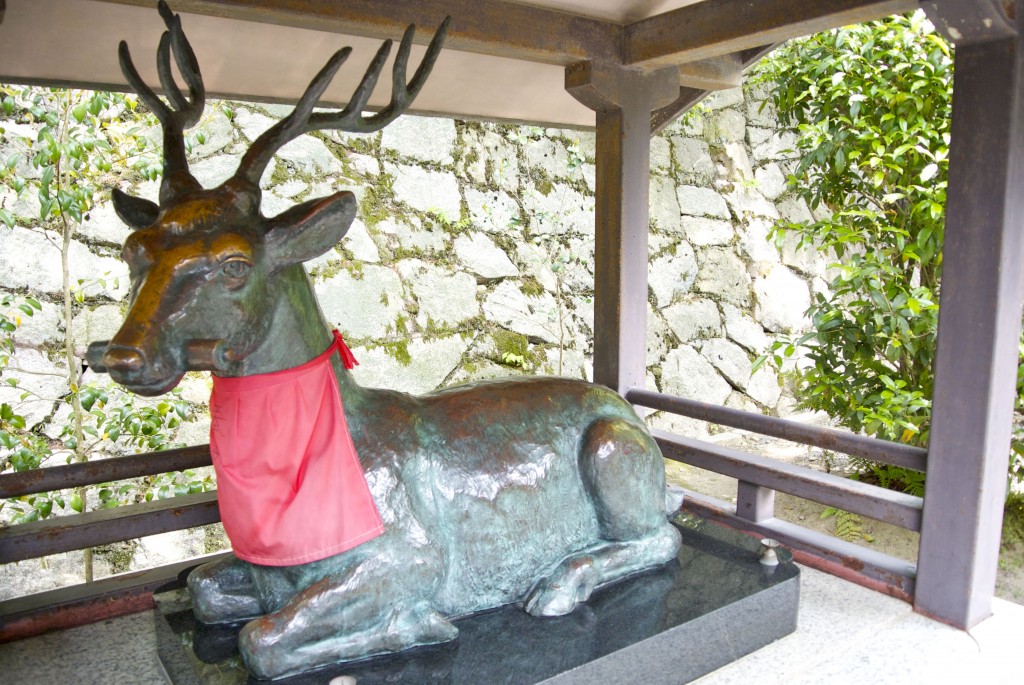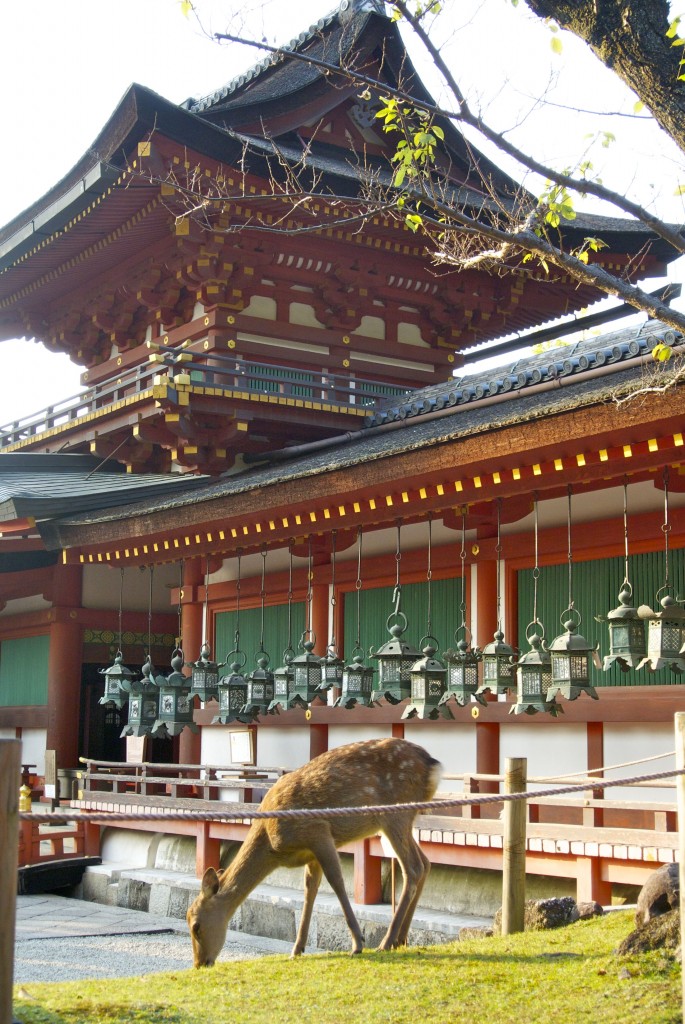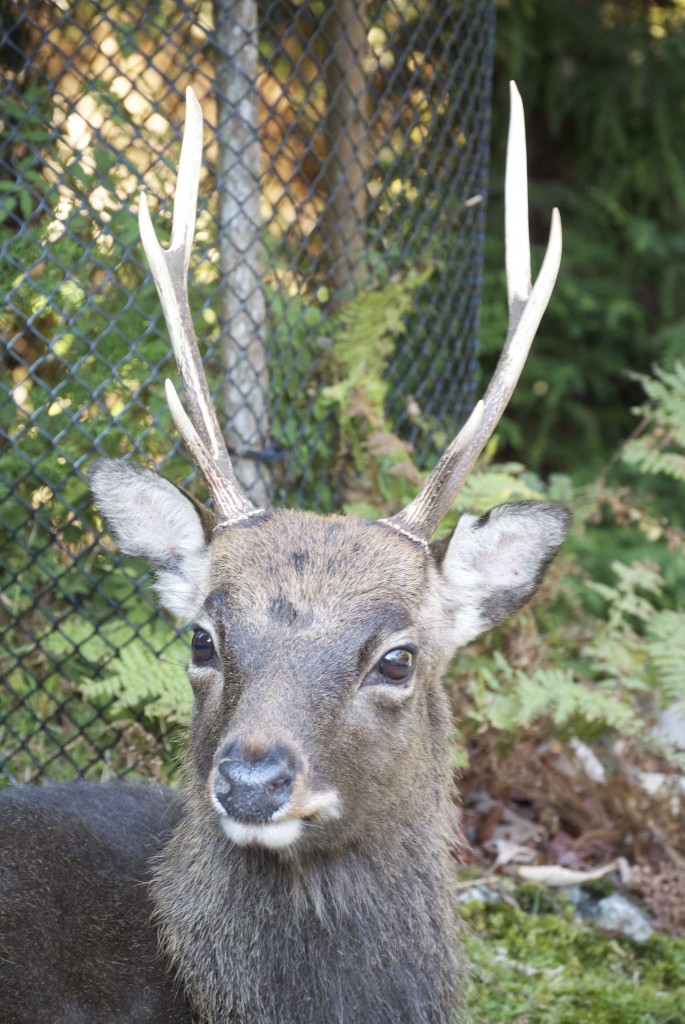
The deer statue at Kyoto's Yoshida Shrine, with a message from the kami - relative to the gift-bearing reindeer of Santa Claus?
When one thinks of deer in Japan, one thinks naturally of Nara Park and the connection of the animal with the Fujiwara clan, for whom it was a sacred animal. One of the clan’s founding kami, Takemikazuchi no mikoto, arrived there in 768 from Kashima (Ibaraki Prefecture) riding a white deer, and from that point the animal was considered sacred.

A deer enjoys the sanctuary of Kasuga Taisha in Nara
During some recent reading I happened upon the reindeer Tungus clan of Manchuria. They not only herded the animals, but rode them and milked them. Interestingly, the Northern Tungus sacrificed deer to their gods (sometimes substituting horses), and in their folklore a large white deer was thought to carry clansmen to the ‘other river world’. It was under their influence that reindeer herding spread west with the Samoyeds to the people of the Urals and on to the Lapps.
It is of course from Lapland that the shamanic figure of Father Christmas comes, flying in mystic fashion across the skies with his sled and reindeer. The animal would have once aided shamanic flight into a different dimension of reality, and in later centuries this became co-opted by Christian teaching to provide a message of warmth in the bleak midwinter. The birth of the new year was symbolised in the birth of the baby Jesus, and pagan celebrations to overcome the cold were made into a time of gift-giving for a saviour figure.
Now here’s an intriguing thought: could aspects of the Tungus deer cult have travelled with migration into the Korean peninsula, playing a part in the Fujiwara clan mythology? It would certainly fit in with the wider picture of continental culture moving down the peninsula and into Japan. Both Yayoi and Yamato culture most likely derived from Korea.
It’s a strange thought, but perhaps the deer that nestles at the Fujiwara shrine of Yoshida Jinja, near to where I’m writing these words, is connected to the flying reindeer that sped across the skies in my childhood imagination. Shamanic in origin, the power animal has become associated with religions on opposite sides of the world. In one case the creature pulls a sled, and in the other it serves as vehicle for the kami – deer spirits that speak to the shamanic roots of religion everywhere.

Could this docile deer in Nara Park be related in mythological terms to Rudolph the red-nosed reindeer?

Leave a Reply